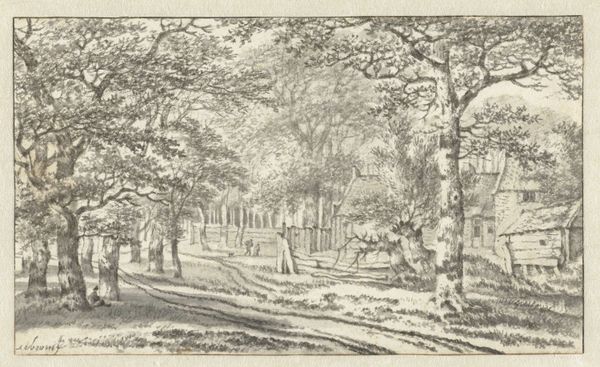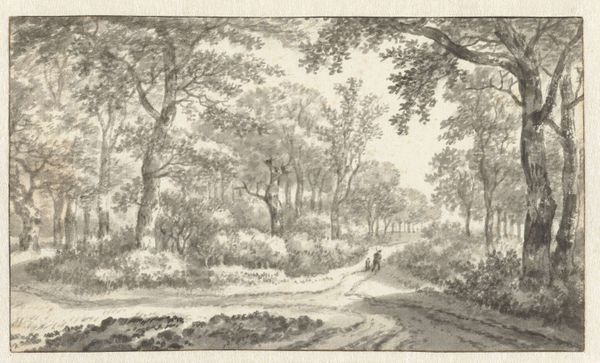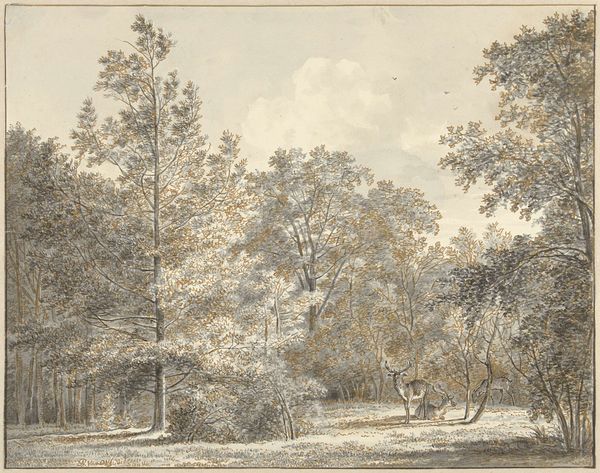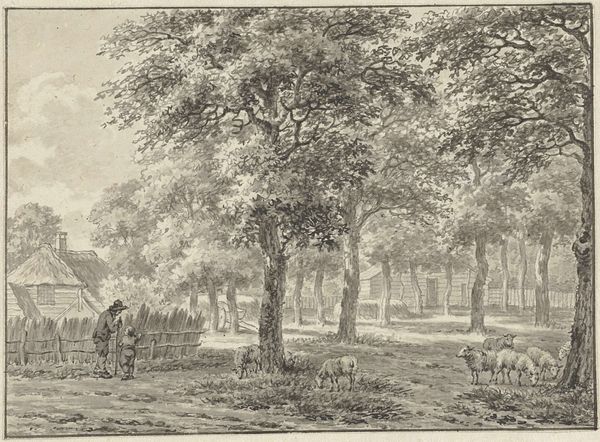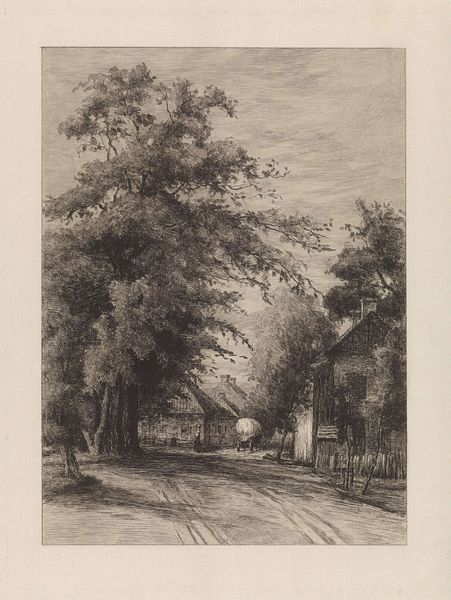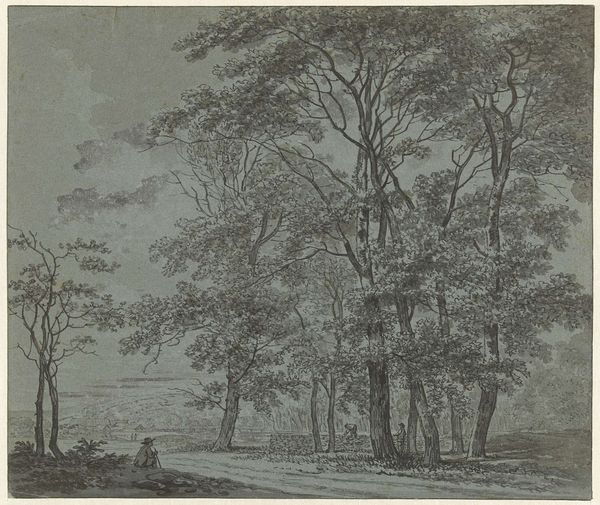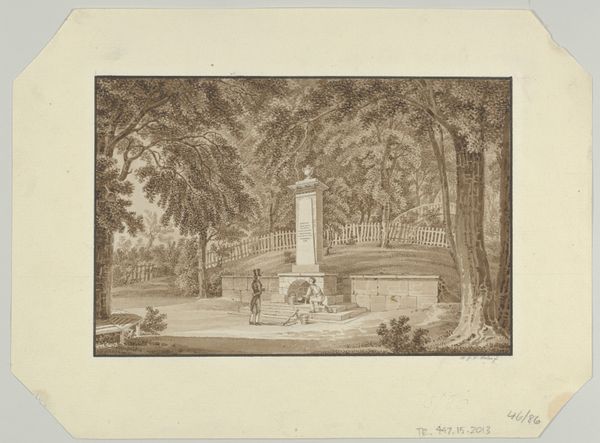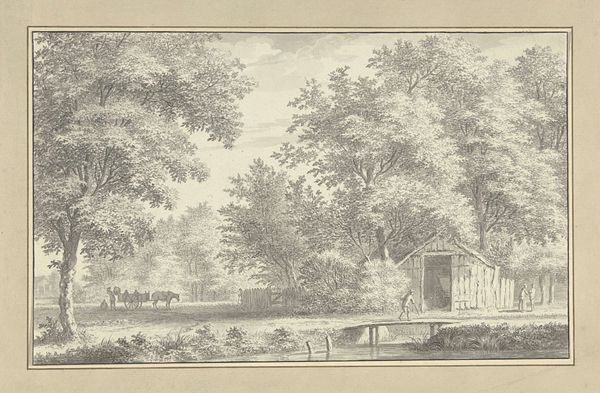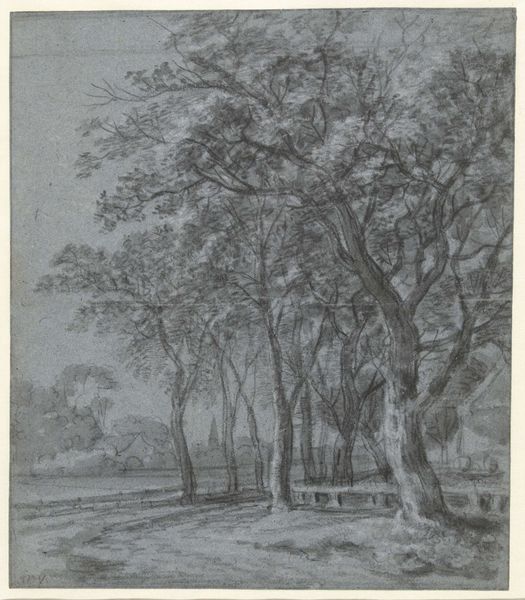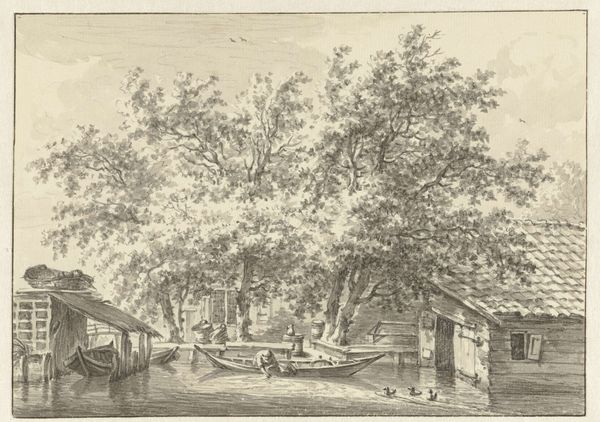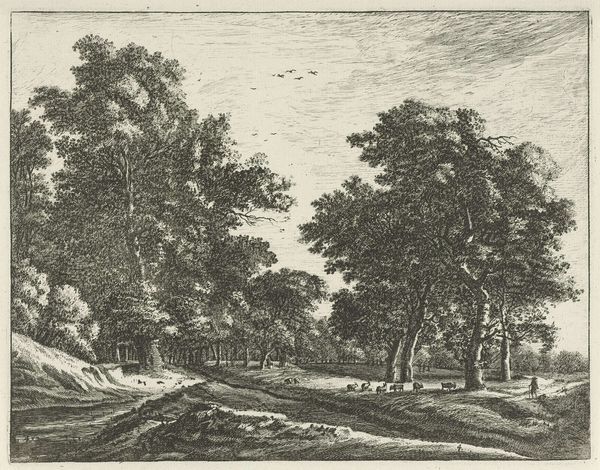
Het gedenkteken voor Witte van Haemstede, in 1817 opgericht door David Jacob van Lennep bij het Huis te Manpad in Heemstede 1817 - 1850
0:00
0:00
drawing, ink
#
drawing
#
neoclacissism
#
landscape
#
ink
#
history-painting
Dimensions: height 256 mm, width 370 mm
Copyright: Rijks Museum: Open Domain
Curator: It's melancholic, wouldn't you say? This ink drawing almost breathes a quiet resignation. Editor: Quite. Gerrit Lamberts created this work sometime between 1817 and 1850. It depicts “Het gedenkteken voor Witte van Haemstede,” the memorial erected by David Jacob van Lennep at Huis te Manpad. The work adheres to Neoclassical conventions while also embracing aspects of the landscape tradition. Curator: That balance is really compelling, the very careful arrangement of trees creating a stage for a manufactured object of memory. I am intrigued by the choice to depict it this way in ink, a seemingly simple and easily sourced medium. It speaks of accessibility, to documentation and to memory. Editor: Indeed. The decision to represent this monument within a natural setting underscores its integration into the cultural landscape. These commemorative objects serve a purpose within a specific society and their presence invariably informs the experience of space for those encountering them. Note also the surrounding fence, indicating a guarded and formalized recognition of whatever event took place. Curator: The fence really frames a hierarchy—between us as the viewer, and the memory of Witte van Haemstede. Was van Lennep’s act simply for commemorating an individual or also shaping political ideas, power dynamics? Editor: Absolutely, the act of commemoration is inherently political. It tells us which histories, and consequently which values, are important to those in positions of power. Van Lennep would be leveraging the symbolic value to shape a collective narrative. What stands out for you when thinking of the drawing's technique? Curator: The light and shadow achieved with the limited range of tones. It’s more than documentation. Lamberts creates a space for contemplation using just ink, paper, and intention. What's most striking to me is its handmade quality which is in contrast to the rather strict symmetry and formality of the monument itself. Editor: A good observation. It's remarkable how art objects operate within systems of patronage, exhibition, and ultimately, historical canonization, shaping our collective understanding of the past. Curator: Thank you for sharing your insight. It reframes my thinking entirely about this drawing, particularly its creation and afterlife. Editor: A valuable thing to be reminded of when engaging with art that bears witness to an event—to always question whose history it is reflecting.
Comments
No comments
Be the first to comment and join the conversation on the ultimate creative platform.
